How Do You Make the Screen to Ask for Permission to Pop Up Again
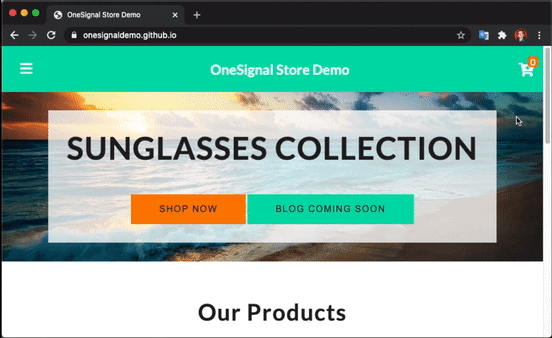
Example showing the Slide Prompt with Category Tags.
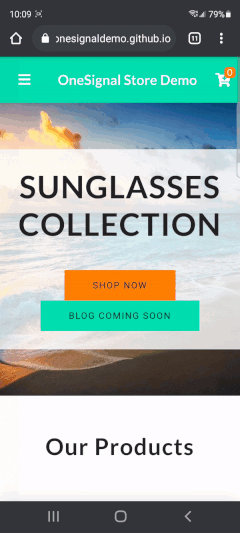
Example Slide Prompt with Category Tags on Android.
"Prompting" is asking user'southward permission to send them push notifications. Prompts are popular-up letters presented by the browser or mobile app and require the user to click "Let" to be subscribed.
If you have a mobile app, meet our iOS Prompt Guide. Android Mobile App devices don't demand to exist prompted, they go subscribed when opening your app for the first time.
Web Push works on Desktop and Android. Apple does non support spider web push on iOS like iPhone and iPad. Browsers provides their own Native Permission Prompt which is required to exist both shown and clicked "Allow" for the user to subscribe to your website.
Browsers now highly recommend websites be more selective when it comes to showing the Native Permission Prompt. This is why using OneSignal Prompts or your ain custom "soft prompts" earlier the native prompt are encouraged.
OneSignal provides "soft prompts" that are shown earlier the Native Permission Prompt and engage the user to select categories they are interested in getting messages about and provide phone or e-mail. These prompts practise not supersede the native prompt and do non subscribe the user to spider web push.
These prompts are beneficial because they increase the likelihood users will stay subscribed to your messages and are highly recommended past the browsers. Permission prompts do three things:
- Inform a user of the value of subscribing to Push Notifications, Electronic mail and SMS
- Prevent users from being blocked from subscribing.
- Trigger a Native Prompt, if users betoken intent.
OneSignal Prompts are a 'soft request', pregnant that they are not invoking the 'hard request' of the browser's Native Permission Prompt. This is important because if a user denies the native prompt, the developer is unable to prompt the user once again, unless the user goes through a multi-stride process to re-enable these permissions. On the other mitt, if a user dismisses a Soft Prompt, the app or website can notwithstanding nowadays them the pick later on.
The Slide Prompt displays on superlative of your site, in the pinnacle heart of the browser (bottom center on Android).
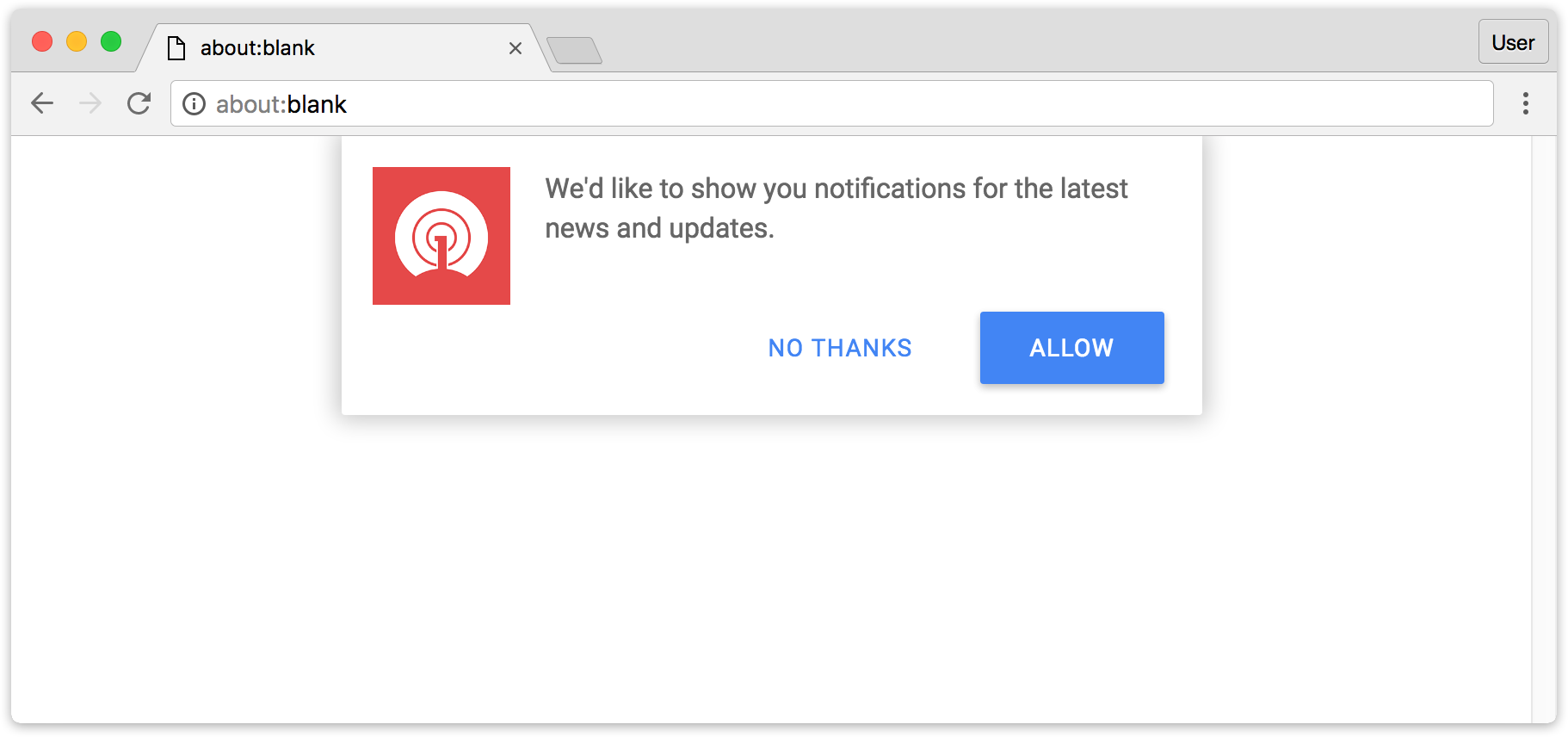
The Category Slidedown works just like the regular Slide Prompt except it also allows subscribers to opt-in or out of notification categories. The Category Slidedown is configurable through the dashboard for Typical Site setup and can also be configured via custom code.
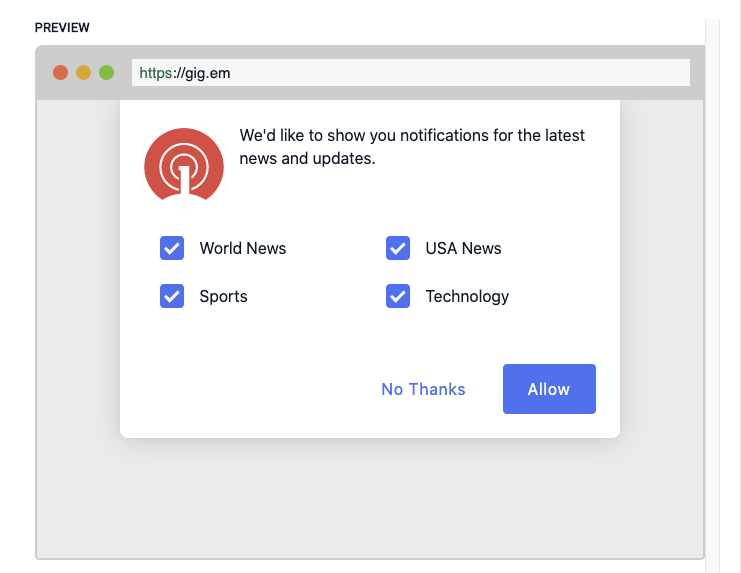
The Email & Telephone Number Slidedown adds optional text fields for users to add email, phone number or both. The Category Slidedown is configurable through the dashboard for Typical Site setup and can also be configured via custom code.
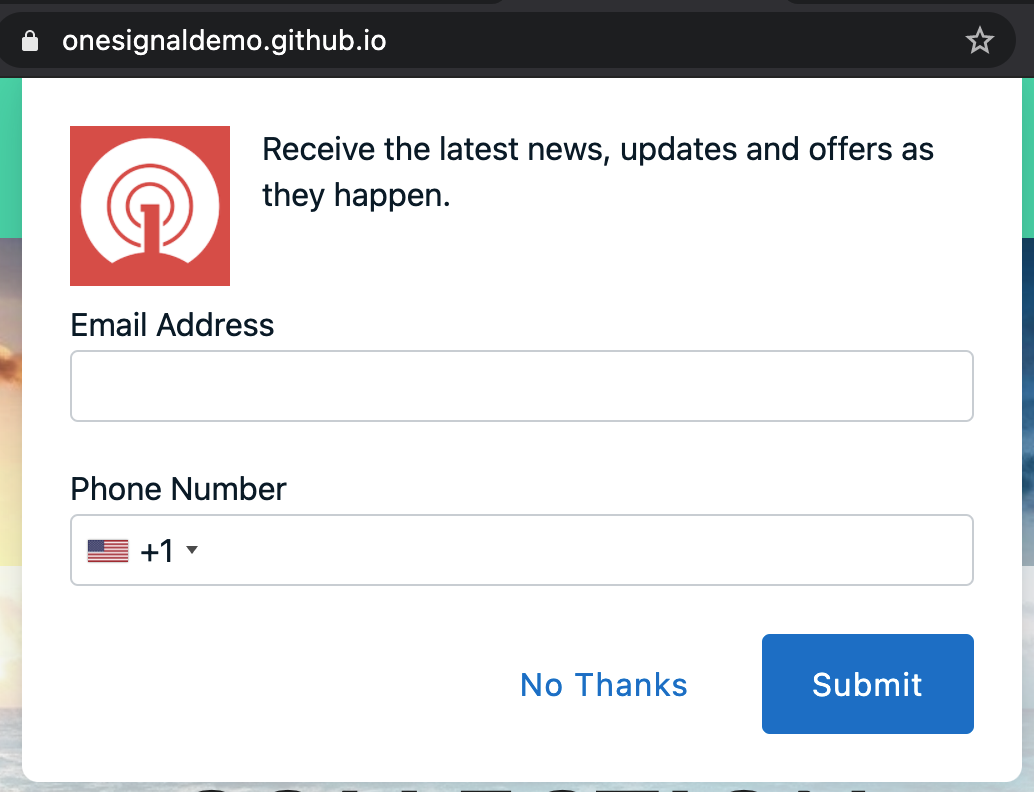
The subscription bong is a small-scale widget that resides in the lower left or right corner of your site, which users can click to bring upwardly the Native Permission Prompt for your site. It is designed to be minor enough that you may keep it on your site at all times, and does not require users to dismiss information technology.
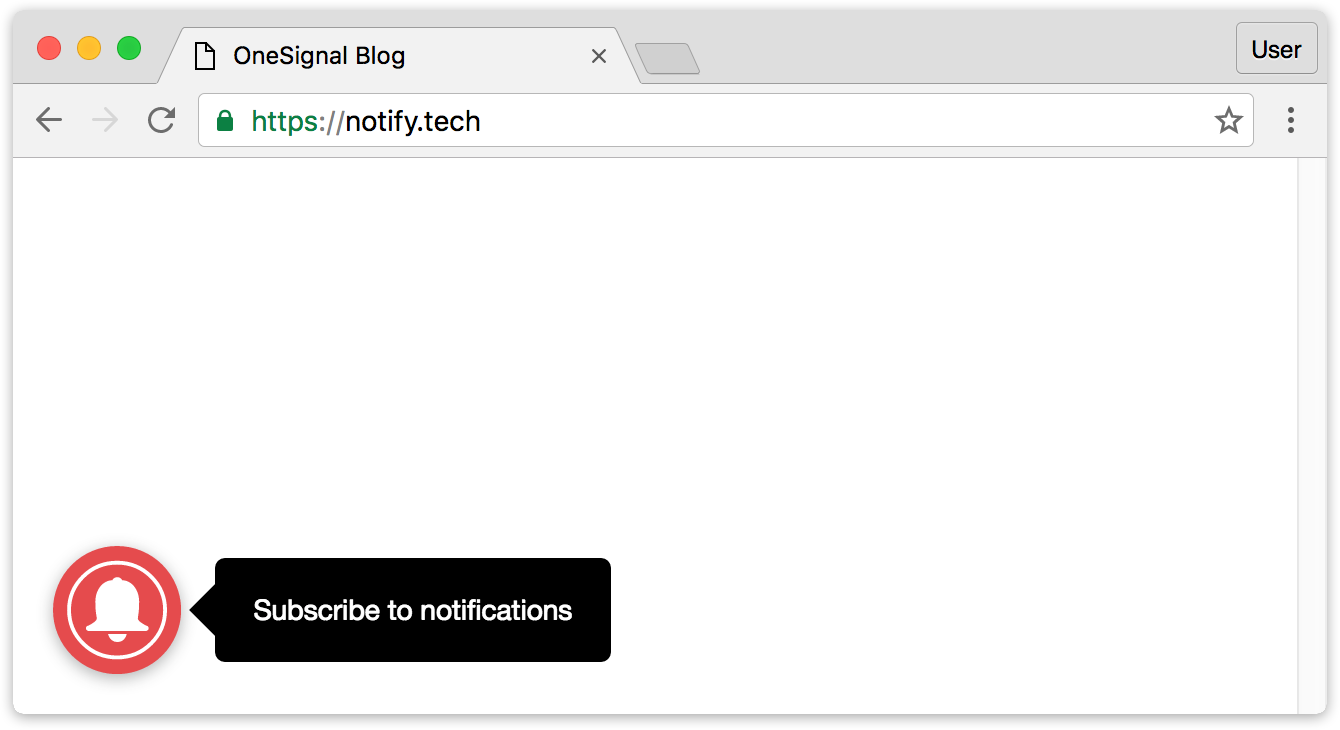
Simply add a snippet to your site'due south markup and it will exist rendered as a button or link that triggers subscription flow when user chooses to subscribe. Provides skilful user experience. Tin be customized through the dashboard at any time without changes to your site's code.
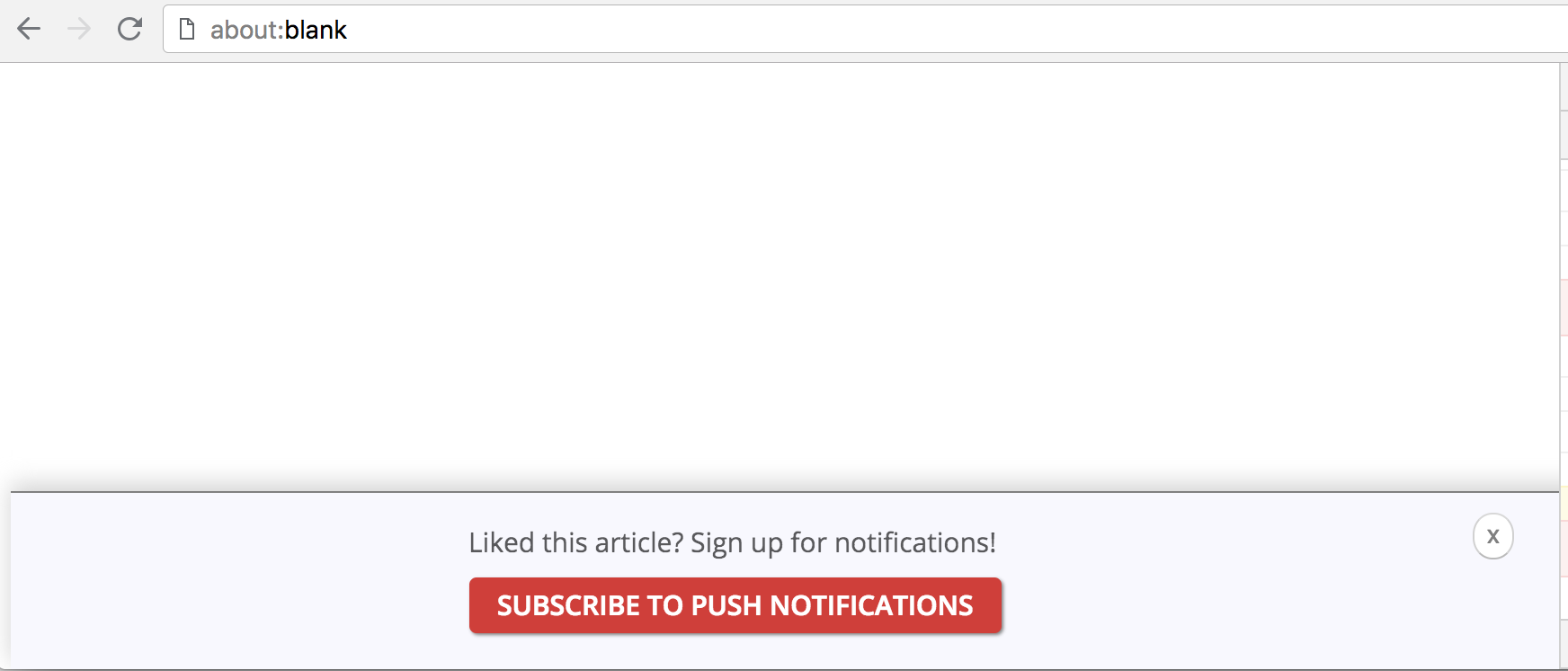
HTTP only - The HTTP Pop-Up Prompt is presented in a separate pop-upwards window for HTTP sites. It cannot be triggered alone and must follow the above prompts.

HTTPS sites may cull non to use a soft prompt and instead trigger the browser'southward Native Permission Prompt. However, immediately prompting users to subscribe with the Native prompt is being deprecated by the browsers and is not recommended.
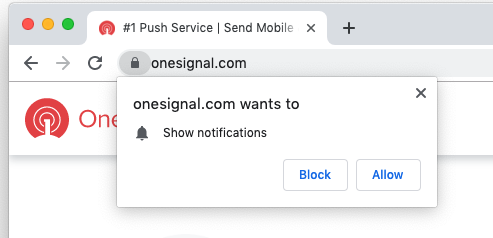
Best practice is to delay the Slide or Native Prompt from showing on screen. Giving visitors time to scan your content before prompting tin improve appointment and ensure the browser doesn't penalize your site.
You tin delay prompts based on:
- page views: the number of times a page is viewed/loaded on the screen
- seconds: amount of time passed in a single page to show the prompt
Programmatically show the prompt anytime!
Utilize our SDK Prompting Methods to show the prompt with code.
Make sure to plow off the "Auto-prompt" option to call these methods.
Using the Typical Site Setup you tin can customize showing the Slide or Native prompt after 10 amount of seconds the user is on the site and/or after X amount of page views. For example, show the prompt xxx seconds after the user visits 3 pages.
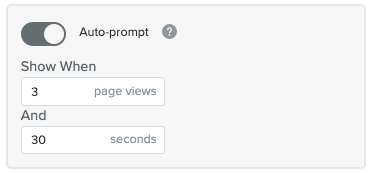
If using Custom Lawmaking Setup, see examples for configuring prompt delays through OneSignal init.
WordPress requires some more than steps shown in this guide on adding a delay to your WordPress Site.
If a user clicks "Cake" (Chrome), "Don't Let" (Safari), or "Never Allow" (Firefox) on the Native Permission Prompt they can never exist prompted from the site once again and must subscribe or reset permissions through a multi-stride process through the browser settings. This is ane reason it is recommended to utilise the OneSignal Prompts.
If a user clicks "X" on the Native Permission Prompt or "No" on the OneSignal Prompts, then the post-obit occurs:
Chrome - You have 3 tries to get the user to subscribe, later on the 3rd "X" click on the required native permission prompt, they volition non get prompted once again for a week. More on this Chrome feature here. For Chrome on Android, come across Why is Slide Prompt Showing on Mobile.
Firefox - Showtime with Firefox 70 once a user clicks "Ten" they will need to click the minor notification icon in the browser to be prompted over again. Also, with Firefox 72+ the Native Browser Prompt is prevented from showing, meet beneath Why exercise I come across the Slide Prompt on Firefox when I want the Native Browser Prompt for more details.
The OneSignal Side Prompt will testify later 3 days, 7 days, and then thirty days if the user clicks "Allow" or "Cancel" on information technology and is still not subscribed.
For instance, if a user clicks "Permit" on the slide prompt, but "x" on the native prompt, it volition not show again for 3 days the first time. After 3 days, it will show again and if the user clicks "Cancel" or "Allow" but "X" on the native prompt, it will not testify again for 7 days. After 7 days if the user does this again, it volition exist every thirty days.
If the user clears cookies or browser data, the cycle resets.
For testing purposes, please follow Clearing your enshroud and resetting button permissions to admission your site every bit a new commencement-time user.
It is all-time to ask visitors to subscribe after you have provided some value to them through the site. This could be after they accept read your manufactures or in a "site settings"/"profile" page, and/or in your shopping-cart or cheque-out menstruum.
Common best practices include:
- Using a Delayed Slide Prompt.
- Embedding the Custom Link Prompt in the middle and/or at the end of the articles and within a "Subscription Page" or section of the user'due south Profile folio if you take one.
- Adding the Bell Prompt to allow users to easily subscribe/unsubscribe throughout the site.
- If you add together your ain call-to-action buttons (similar add to cart or subscription events) on the site or want to show the Native Browser Prompt someday, use the
OneSignal.showNativePrompt();method. Your site must be HTTPS and did not select "My site is not fully HTTPS" in the OneSignal Site configuration.
You tin can put any language you similar into the prompt. If yous are trying to dynamically alter the prompt language based on the page, then switch to the Custom Code Setup and initialize OneSignal based on the language of the page.
Currently OneSignal does not automatically translate the Slide Prompt , Bell Prompt , or Custom Link prompt. They default to English language, but you tin put any linguistic communication and message you want.
The Native Browser Prompt volition automatically translate to the browser linguistic communication settings.
Using the Custom Code Setup you can initialize OneSignal with the different prompting options. You would need to setup your own mode to trigger the A/B/C/D etc tests which initialize OneSignal.
As a bonus, y'all can utilize the Subscription Change method to discover when the user subscribed and add Information Tags based on which test won the subscription.
Make certain you are not in incognito mode, private browser mode or guest browser mode.
Yes! Please see our guide Automobile-Segment By Subscription Folio.
Apple still does not support Spider web Push button on iOS like iPhone and iPad. This is an Apple tree limitation and no push provider can provide Web Push Notifications on iPhone and iPad. You need an iOS mobile app to send push on iPhone and iPad. GoNative.io is a great way to plow your website into a mobile app.
The Native Browser Prompt will not testify while in Incognito Way, Private Browser mode or Guest Browser style. Information technology will as well not evidence right away on Safari 12.1+ or Firefox 72+ (more details).
Also make sure you are using a browser and device that supports web push.
Check your prompt setup to make certain Auto-prompt is turned on and the Delayed Prompts are non blocking you.
Final would be to follow these steps to reset your cookie and browser cache to visit your site similar a start time user.
If you utilize Typical Setup, make sure to disable Auto-Prompt for both Slide and Native prompts. If you use the bell prompt, yous will need to remove the OneSignal init call on pages you practise not want the bell to show or switch to the Custom Code Setup.
You tin now trigger the Native or Slide prompt with the SDK methods. See the prompt guide for details.
WordPress Users: at that place is currently not a mode to disable the OneSignal subscription prompts on certain pages/posts through the plugin straight, this volition require adding code to the site.
We provide two options on how to setup the prompts on different pages of your site:
https://documentation.onesignal.com/docs/web-button-wordpress-faq#how-practise-i-enable-the-plugin-for-certain-pages-merely
With Firefox 72+ in that location is a change that requires a user to click a push to evidence the native browser prompt. If you attempt to automatically show the native browser prompt, yous will encounter an icon within the browser similar this:

The user must click this icon to view the Native Browser Prompt on Firefox. This is why we default to the Slide Prompt on Firefox because it is more "eye-catching" and requires the two-pace opt-in in either case.
If you do not want to show the Slide Prompt equally default, you must turn off the "Car-Prompt" switch in the Prompt Editor:
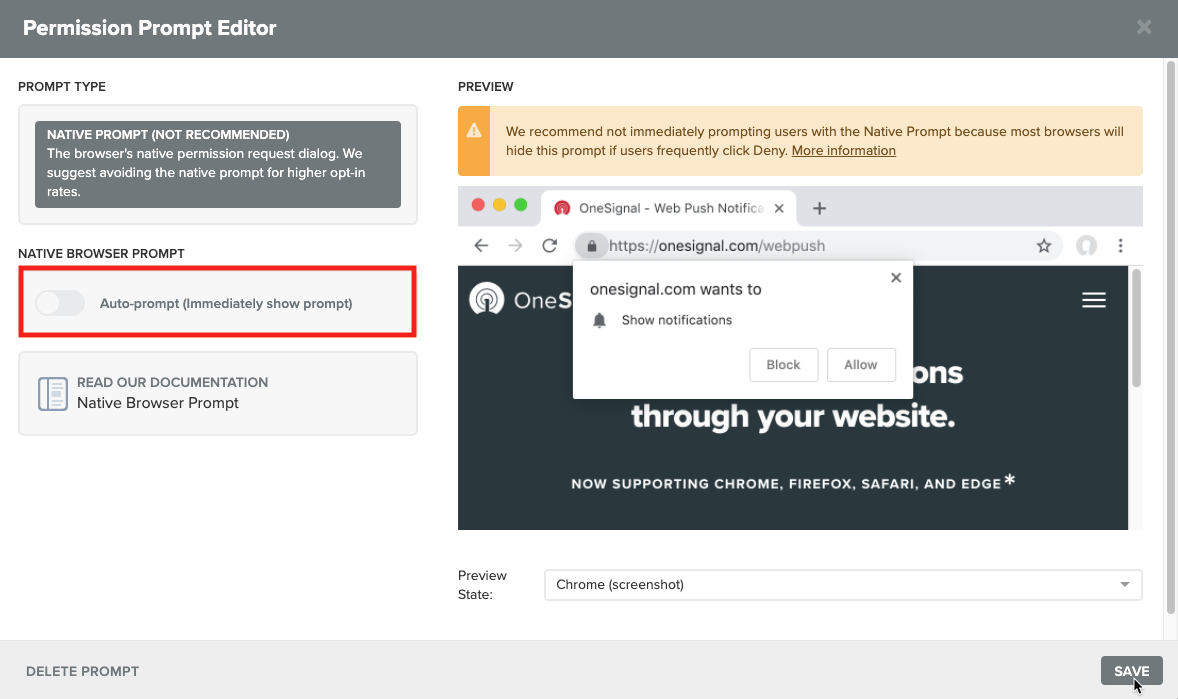
Press "Save" and "Save" over again on the next folio. You can then employ the OneSignal.showNativePrompt() SDK method to trigger the Native Prompt on any folio you want. Example code:
<script src="https://cdn.onesignal.com/sdks/OneSignalSDK.js" async=""></script> <script> var OneSignal = window.OneSignal || []; OneSignal.push(function() { OneSignal.init({ appId: "3beb3078-e0f1-4629-af17-fde833b9f716", }); OneSignal.showNativePrompt(); }); </script> The reason for this behavior is due to a change that Google fabricated on Dec 5th 2022 to Chrome on Android. It is a very user unfriendly popular-up that we deliberately added the double prompt on android to avoid your users from having a bad feel on your site.
For more than details on this or if you lot really want to just show just the native prompt see Why is Slide Prompt Showing on Mobile.
Source: https://documentation.onesignal.com/docs/permission-requests
0 Response to "How Do You Make the Screen to Ask for Permission to Pop Up Again"
Post a Comment